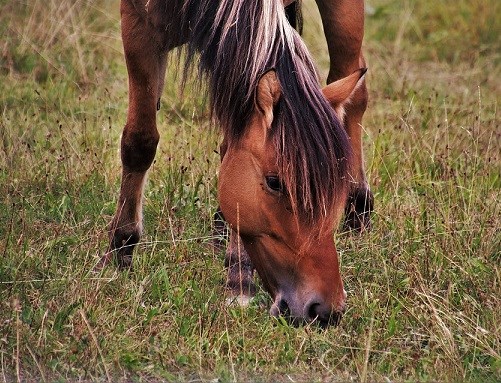Contact
Eva Tydén
Researcher at the Department of Biomedical Science and Veterinary Public Health; Parasitology Unit
Telephone: +4618671208
E-mail: eva.tyden@slu.se

Strongylus vulgaris is considered the most pathogenic nematode parasite of the horse. Frequent deworming programs since the 1970s have reduced the prevalence of S. vulgaris to low levels, but to the price of widespread benzimidazole resistance in the small strongyles (cyathostominae) and ivermectin resistance especially in the equine roundworm Parascaris spp.
To slow down the progression of anthelmintic resistance in Sweden, horse anthelmintics were made prescription only medicine in 2007 and selective therapy principles were introduced. This means that only individuals with high egg excretion or clinical signs of helminth infection were treated instead of blanket treatment of all horses on a farm.
The aims of this study were to investigate the prevalence and risk factors associated with S. vulgaris infection in Sweden ten years after the introduction of a selective therapy regime. A total of 529 faecal samples from 106 farms were collected during March to June in 2016 and 2017. A web-based questionnaire was used to collect information about deworming routines. Strongyle faecal egg counts (FEC) were performed by McMaster and presence of S. vulgaris was demonstrated with a specific PCR on individual larval cultures. Results were analysed by mixed logistic (S. vulgaris prevalence) or linear (FEC) regression models, where farm was included as random factor.
The overall prevalence of S. vulgaris at individual and farm levels was 28% and 61%, respectively. We observed a 2.9 increased odds risk of S. vulgaris infection on farms that based their treatment on strongyle FEC only as compared to farms that complemented strongyle FECs with larval cultures or dewormed regularly, 1–4 times per year, without prior diagnosis. We found no association between the prevalence of S. vulgaris and strongyle FEC level, horse age, geographical region or signs of colic.
The prevalence of S. vulgaris was 25% in horses shedding ≤150 eggs per gram. Thus horses with low strongyle FECs that are left untreated could be an important source of S. vulgaris infection. This may be an important reason for the approximately three-fold increase in S. vulgaris prevalence since 1999 in Sweden. However, our combined results indicate that selective therapy based on a combination of strongyle FECs and larval cultivation was not associated with an increased risk of S. vulgaris infection. Still, S. vulgaris needs to be monitored continuously and should be taken into careful consideration when the treatment frequency is reduced.
https://doi.org/10.1016/j.vpoa.2019.100013
Eva Tydén, Heidi Larsen Enemark, Mikael Andersson Franko, Johan Höglund, Eva Osterman-Lind. Prevalence of Strongylus vulgaris in horses after ten years of prescription usage of anthelmintics in Sweden. Veterinary Parasitology (2019), vol. 2, 100013.
Eva Tydén
Researcher at the Department of Biomedical Science and Veterinary Public Health; Parasitology Unit
Telephone: +4618671208
E-mail: eva.tyden@slu.se